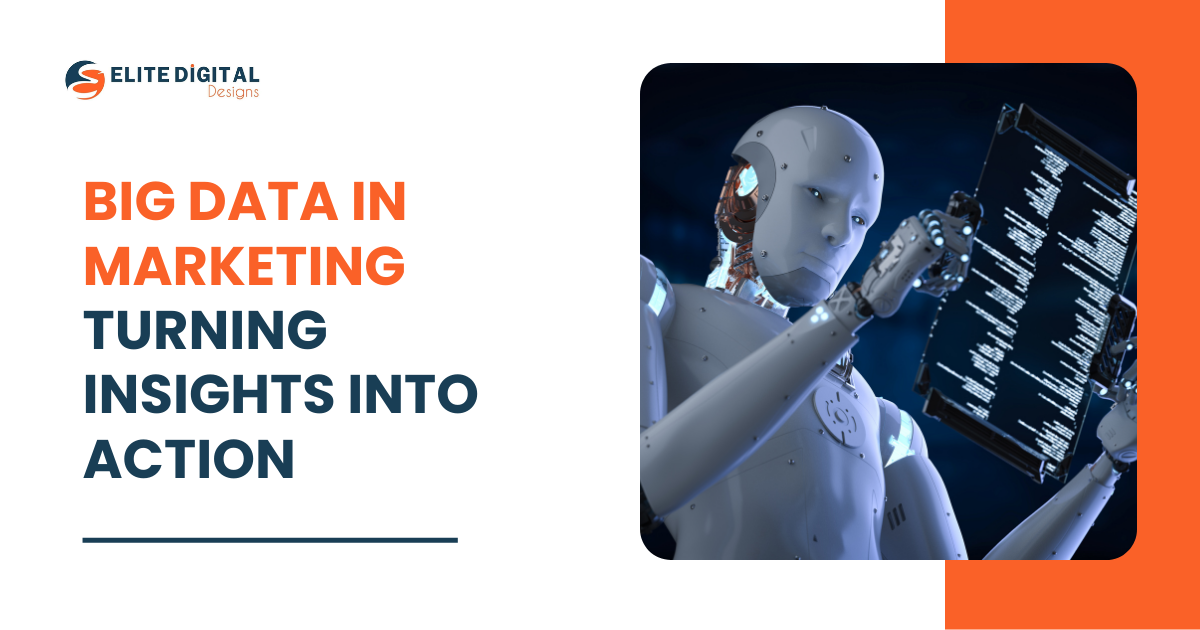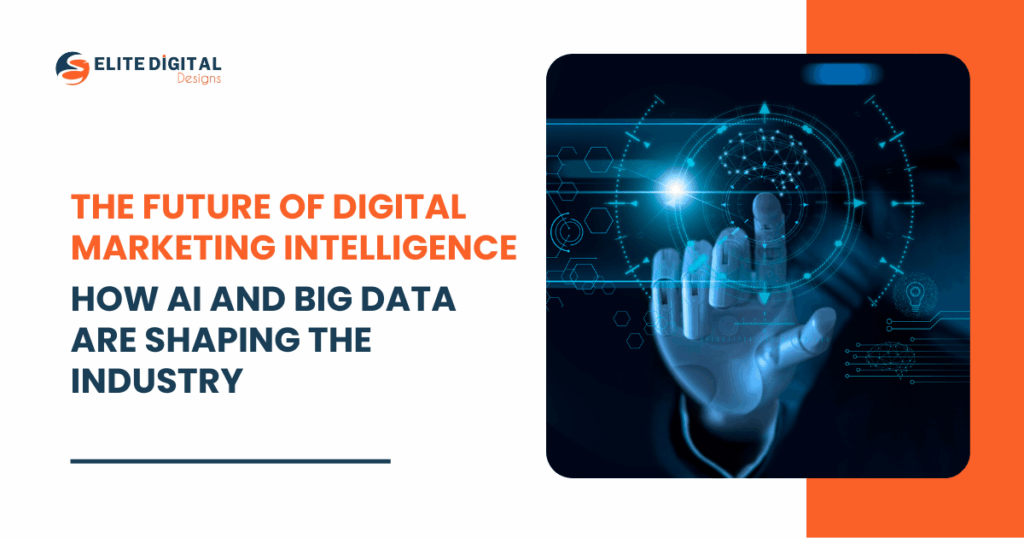There is nothing worse than spending long hours creating a digital marketing campaign, only to flop in the end. Rival firms are gallivanting while customers cool off. The entire digital marketing landscape feels helpless and almost impossible. The problem: Traditional tactics have become ineffective. Today, they should be utilizing AI in digital marketing and leveraging big data, especially in areas like PPC (Pay-per-click) Service, where automation and predictive bidding are redefining ad performance.
The Inner Workings of Digital Marketing Intelligence in the Modern Era
What Is Marketing Intelligence?
Marketing Intelligence is the systematic collection and analysis of data to carry out any application in campaigns. It provides crucial answers, including: Who are your customers? What do customers want? And how do they behave? Under a combination of SEO and digital or virtual intelligence, businesses refine keyword strategies, track user journeys, and measure ROI. For instance, an apparel brand would delve into marketing intelligence where it would know trending colors or styles to ensure that such ads would accord with the seasonal demand.
The Role of Real-Time Data in Digital Marketing
Through real-time data from social media, website traffic, and purchasing histories, brands can carry out an ad-lap in real time. Analytics tools like Google Analytics and HubSpot-managed SEO and digital intelligence assign the high-performing keywords, monitor bounce rates, and employ landing pages. Imagine a travel agency observing increased search inquiries on “Winter vacations” and immediately putting up an ad targeting ski resorts. This gives definite relevance and cost-effectiveness to all campaigns.
AI in Digital Marketing: Transforming Strategies with Automation

How AI Reshapes Digital Marketing
Automates advertising bidding, segmenting people into email lists, and A/B testing repetitive tasks that digital marketing requires. Google Ads is already using AI to make bids automatically in real-time, making sure budget spends are targeting audiences likely to convert. Machine learning algorithms can also detect shifts in customer sentiment or up-and-coming trends.
Personalization at Scale with AI
Today, personalization is a matter of fact and not a matter of choice. This is why such tools as chatbots and recommendation engines, powered by cutting-edge AI, will examine big data in marketing for interaction. Netflix’s “Because You Watched” and Amazon’s “Frequently Bought Together” are most definitely examples of what AI imagination produces today: hyperpersonalization, which boosts retention and engagement.
Impact of Predictive Analytics on Digital Marketing
Predictive analytics uses historical data to make possible outcomes, such as which leads are most likely to convert or which products will be hot. For instance, it might help a SaaS company identify free trial users most likely to upgrade to a paid plan. Instead of wasting money on ads, companies will get better ROI by focusing their efforts on these leads. Predictive analytics is changing digital marketing- smart decisions, faster results.
Big Data in Marketing: Turning Insights Into Action

Why Big Data Is Essential for Modern Marketing
Big data in marketing refers to the massive datasets brands collect from websites, apps, and CRM systems. These datasets reveal customer preferences, seasonal demand shifts, and campaign weaknesses. A beverage company, for instance, might analyze social media chatter to discover a rising interest in low-sugar drinks and pivot its product launches accordingly.
Customer Segmentation Simplified
Big data allows brands to group audiences into precise segments. A fitness brand could categorize customers into “gym enthusiasts,” “yoga practitioners,” or “outdoor adventurers” based on browsing behavior. Each segment receives tailored ads—protein shakes for gym-goers, meditation apps for yogis. This strategy increases conversion rates by delivering relevant messaging.
Measuring Campaign Effectiveness with Data
Tracking metrics like click-through rates, conversions, and bounce rates is key to refining campaigns. Tools like SEMrush and Moz combine SEO and digital intelligence to highlight underperforming keywords or pages. For example, an e-commerce store might discover that mobile users abandon carts due to slow load times and prioritize site speed improvements.
AI + Big Data: A Powerhouse for Marketing Intelligence
Synergy Between AI and Big Data
AI and big data work hand-in-hand: AI processes data faster, while big data improves AI’s accuracy. Retailers like Walmart use this synergy to manage inventory. By analyzing sales data and weather forecasts, AI predicts demand for umbrellas during rainy seasons or sunscreen in summer, ensuring shelves are never empty.
Dynamic Pricing Driven by Data
E-commerce giants like Amazon adjust prices in real time using AI and big data in marketing. If a competitor lowers the price of a laptop, AI automatically matches or undercuts it. This strategy maximizes sales without manual intervention.
Sentiment Analysis for Brand Health
AI scans social media comments, reviews, and forums to gauge public sentiment. This makes it essential for any Social Media Marketing Service to monitor brand perception in real time and adapt messaging based on audience sentiment. A sudden spike in negative feedback about a product flaw? Brands can address it before it escalates.
.
Real-World Examples of AI and Big Data in Action
Brands Winning with Marketing Intelligence
- Spotify: Uses AI in digital marketing to analyze listening habits and recommend playlists, keeping users engaged longer.
- Sephora: Combines augmented reality (AR) with purchase data to suggest makeup shades, driving an 11% increase in online sales.
- Starbucks: Leverages the impact of predictive analytics on digital marketing to forecast seasonal demand, ensuring stores stock the right amount of pumpkin spice syrup each fall.
Challenges to Overcome
Roadblocks in Adopting AI and Big Data
- Data Privacy Concerns: Regulations like GDPR require transparent data collection. Brands must anonymize user data and obtain consent.
- Skill Gaps: Teams need training to use tools like Tableau or Google Analytics effectively.
- Integration Costs: Upgrading legacy systems to handle AI and big data can be expensive, though cloud-based solutions like AWS offer scalable alternatives.
What’s Next for Digital Marketing?
Future Trends to Watch
- Voice Search Optimization: As smart speaker usage grows, optimizing for phrases like “best coffee shops near me” will be critical.
- AI-Generated Content: Tools like Jasper and ChatGPT will draft blog posts, social captions, and product descriptions, saving time for creative teams.
- Ethical AI: Brands must balance personalization with privacy, avoiding invasive data practices.
FAQs
Q1: How does AI improve ad targeting?
AI improves targeting in digital marketing by analyzing the user behavior, demographic data, and purchase history to serve ads to the potential audience with the highest intent to purchase. Finetuning different versions of the ad allows for knowing which ad works the best.
Q2: Can small businesses use big data effectively?
Sure. Inexpensively, Google Analytics and Mailchimp have offered many marketing intelligence tools to small businesses, enabling them to monitor campaign success and segment audiences efficiently without having the luxury of big budgets.
Q3: What’s the biggest risk of relying on AI?
Too much automation, and your campaigns become robotic! Balance your time working with AI with creative output from humans: let AI gather data, give input on creative strategy; let the writers write the story.
Q4: How do I start integrating AI into my strategy?
Consider low-hanging fruit: a chatbot for customer service, email automation for drip campaigns. As your company matures, look at predictive analytics to hone in on targeting.
Final Thoughts
AI in Digital Marketing and big data in marketing are not just options anymore; they have become a prerequisite. From hyper-personalized ad campaigns to real-time price adjustments, these two have been used as weapons for staying in the competition. It provides actionable insights from raw data, and with the help of marketing intelligence, companies gain concrete strategies that drive growth.
Are you ready to introduce AI and big data to your brand? Learn at Elite Digital Designs & consult our experts to build campaigns that convert.


